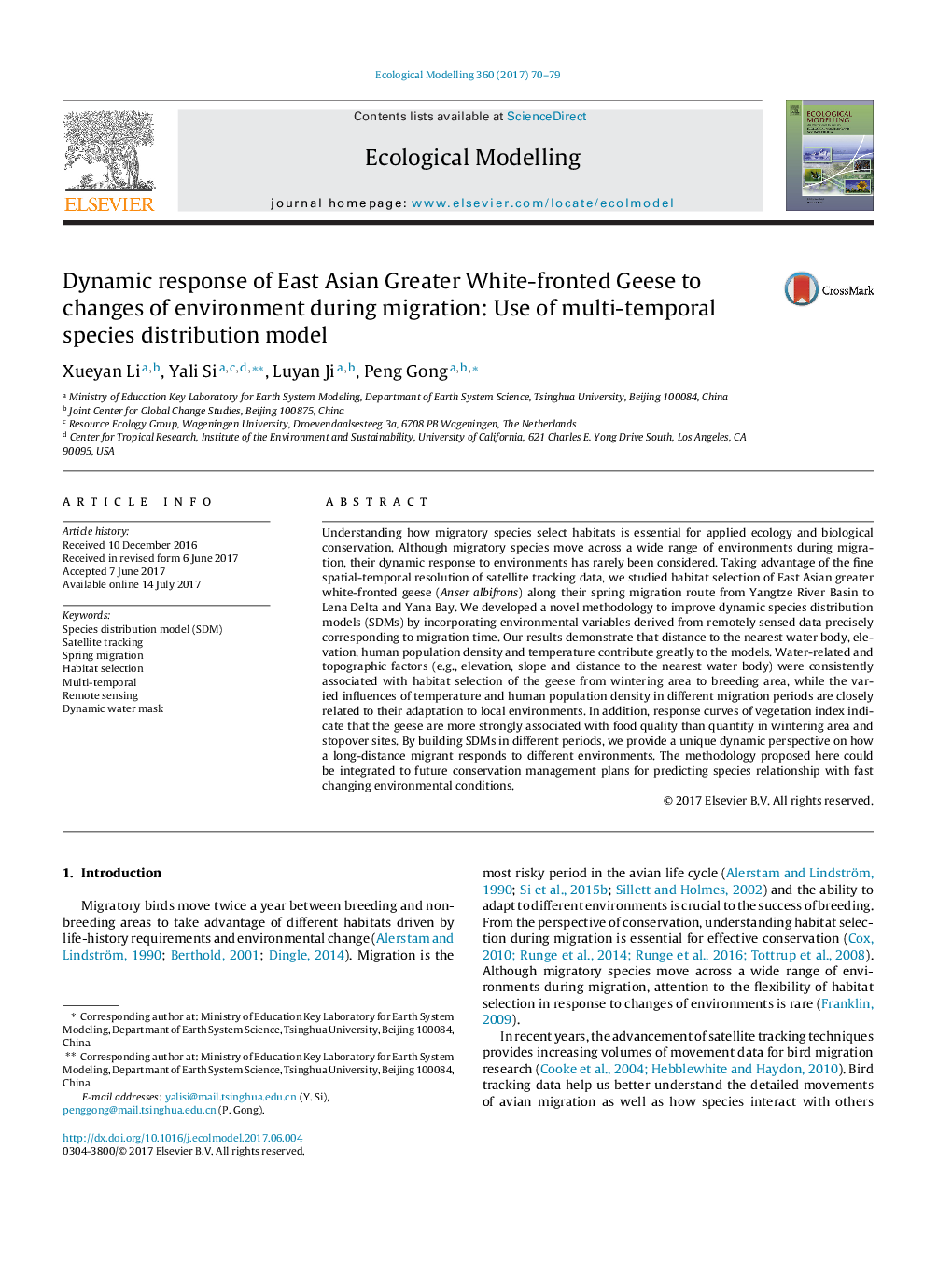| کد مقاله | کد نشریه | سال انتشار | مقاله انگلیسی | نسخه تمام متن |
|---|---|---|---|---|
| 5742049 | 1617387 | 2017 | 10 صفحه PDF | دانلود رایگان |
- A novel methodology for multi-temporal SDMs using dynamic environment variables is proposed.
- The methodology is based on satellite tracking data and remote sensing data with high spatial-temporal resolution.
- Incorporating dynamic environmental variables that precisely correspond to migration time could help better understand the dynamics of species-environment relationships.
Understanding how migratory species select habitats is essential for applied ecology and biological conservation. Although migratory species move across a wide range of environments during migration, their dynamic response to environments has rarely been considered. Taking advantage of the fine spatial-temporal resolution of satellite tracking data, we studied habitat selection of East Asian greater white-fronted geese (Anser albifrons) along their spring migration route from Yangtze River Basin to Lena Delta and Yana Bay. We developed a novel methodology to improve dynamic species distribution models (SDMs) by incorporating environmental variables derived from remotely sensed data precisely corresponding to migration time. Our results demonstrate that distance to the nearest water body, elevation, human population density and temperature contribute greatly to the models. Water-related and topographic factors (e.g., elevation, slope and distance to the nearest water body) were consistently associated with habitat selection of the geese from wintering area to breeding area, while the varied influences of temperature and human population density in different migration periods are closely related to their adaptation to local environments. In addition, response curves of vegetation index indicate that the geese are more strongly associated with food quality than quantity in wintering area and stopover sites. By building SDMs in different periods, we provide a unique dynamic perspective on how a long-distance migrant responds to different environments. The methodology proposed here could be integrated to future conservation management plans for predicting species relationship with fast changing environmental conditions.
Journal: Ecological Modelling - Volume 360, 24 September 2017, Pages 70-79
